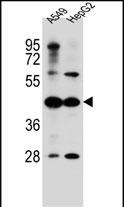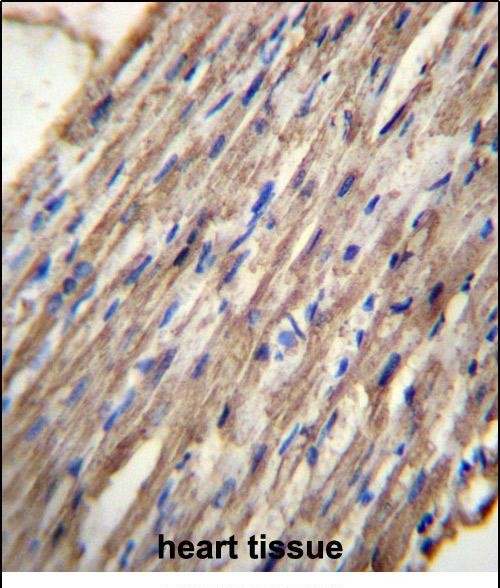

| WB | 1/1000 | Human,Mouse,Rat |
| IF | 咨询技术 | Human,Mouse,Rat |
| IHC | 1/100-1/500 | Human,Mouse,Rat |
| ICC | 技术咨询 | Human,Mouse,Rat |
| FCM | 咨询技术 | Human,Mouse,Rat |
| Elisa | 咨询技术 | Human,Mouse,Rat |
| Aliases | Acyl-coenzyme A synthetase ACSM6, mitochondrial, Acyl-CoA synthetase medium-chain family member 6, ACSM6, C10orf129 |
| Entrez GeneID | 142827 |
| WB Predicted band size | 53.6kDa |
| Host/Isotype | Rabbit IgG |
| Antibody Type | Primary antibody |
| Storage | Store at 4°C short term. Aliquot and store at -20°C long term. Avoid freeze/thaw cycles. |
| Species Reactivity | Human |
| Immunogen | This C10orf129 antibody is generated from rabbits immunized with a KLH conjugated synthetic peptide between 433-460 amino acids from the C-terminal region of human C10orf129. |
| Formulation | Purified antibody in PBS with 0.05% sodium azide. |
+ +
The C10orf129 antibody is a research tool designed to detect the protein encoded by the *C10orf129* gene (Chromosome 10 Open Reading Frame 129), a poorly characterized gene located on human chromosome 10. While the precise biological function of the C10orf129 protein remains unclear, studies suggest potential roles in cellular processes such as metabolism, cell cycle regulation, or stress responses. Bioinformatics analyses indicate conserved domains, hinting at possible enzymatic or regulatory functions. Interest in this antibody has grown due to emerging associations between C10orf129 dysregulation and diseases, including certain cancers (e.g., hepatocellular carcinoma) and neurological disorders, though mechanistic insights are still limited.
C10orf129 antibodies are typically produced using immunogens derived from recombinant protein fragments or synthetic peptides corresponding to predicted antigenic regions. These antibodies enable protein detection via techniques like Western blotting, immunohistochemistry (IHC), and immunofluorescence (IF). Researchers use them to explore expression patterns across tissues, subcellular localization, and potential interactions with other biomolecules. However, challenges persist in validating antibody specificity due to limited characterization of endogenous protein expression and the absence of standardized controls. Some commercial suppliers now offer C10orf129 antibodies, though independent validation using gene-edited cell lines (e.g., CRISPR knockouts) is strongly recommended. Ongoing studies aim to clarify its functional relevance and therapeutic potential in human diseases.
×